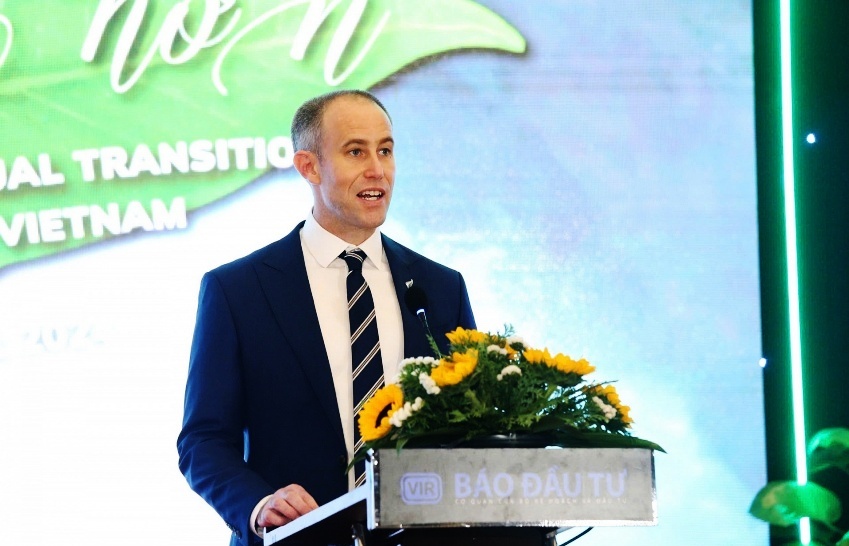5-year plan to boost reforms

PM Nguyen Tan Dung said public investment would focus on infrastructure and human resources,
Photo: Le Toan
Last week the prime minister promulgated an Instruction ordering all governmental bodies and local authorities to make a public investment plan for the period 2016-2020, rather than the previous model which planned each year individually. The instruction follows the Public Investment Law, which was approved by the National Assembly in May.
Two days after the instruction was promulgated, the Ministry of Planning and Investment (MPI) last week held a national conference in Danang city, with the participation of a wide range of leaders from provinces and governmental bodies, to discuss the nation’s medium-term investment plan.
“This is a very new step to make public investment more effective. Previously we would make an investment plan for each year, and this didn’t correlate with the five-year eco-socio development plan. Now we will coordinate the plans by giving them the same timetable,” said Minister of Planning and Investment Bui Quang Vinh while attending the conference.
Vinh cited Vietnam’s success in enhancing the effectiveness of public investment over the last three years, after the government issued Instruction 1792 – first proposed by the MPI – ordering local authorities and government bodies to make an investment plan for three years, from 2013-2015.
Medium-term investment planning means a local authority or governmental body has to list projects being implemented within the five years, with a fixed amount of money to be designated out of the state budget. Both central and local government leaders are responsible for the use of funds, and therefore they should know clearly which projects to prioritise.
This is different from a one-year plan, as local authorities will not, for example, start construction on a road that a year later they do not have the capital to finish.
“We have to renovate, it is essential,” Prime Minister Nguyen Tan Dung said at the MPI conference.
Dung acknowledged that change is a double-edged sword with medium-term investment planning potentially causing conflicts on interest but also reducing shortcomings.
Dung affirmed that the government would increase public investment, focusing on infrastructure and human resources, to ensure an economic growth rate of 6-7 per cent over the next five years.
Nguyen The Thao, Chairman of the People’s Committee of Hanoi, supported the medium-term investment plan, saying it would help the country know exactly what it needs to do over five years and thereby better mobilise what resources it needs to carry out the plan.
For many years, short-term investment planning has been blamed for causing ineffective and unfocused public investments nationwide. Many local authorities have had to delay already-started construction of public investment projects, like roads and irrigation systems, due to capital shortages. Local economists and regulators also cited macroeconomic issues in recent years as another cause for ineffective public investment.
Phung Quang Hung, Chairman of Vinh Phuc province’s People’s Committee, said the medium-term investment plan was a way to reform state management.
Hung recalled the period 2006-2010, when the province approved a plan to invest into 1,290 public projects, totalling $1.38 billion in committed capital.
“We have realised that it will take to 2019 to finish all these projects. Our method was not effective and lacked focus,” he said.
However, he added that province has improved public investment since 2012, when the government promulgated Instruction 1792, by focusing capital on important projects and delaying unimportant ones.
“When we have the necessary funding for important projects, construction goes smoothly. People are happy about that,” said Hung.
What the stars mean:
★ Poor ★ ★ Promising ★★★ Good ★★★★ Very good ★★★★★ Exceptional
Latest News
More News
- VIR sustainable development conference opens in Hanoi (November 12, 2024 | 09:42)
- Taking the lead in dual transition for a greener Vietnam (November 11, 2024 | 17:00)
- Vietnamese consumers careful amid economic volatility (November 11, 2024 | 13:55)
- Quality must come first in chip mission (November 11, 2024 | 10:33)
- Vietnam's digital economy estimated to reach $36 billion in 2024 (November 07, 2024 | 13:52)
- Authorities looks to tackle influx of cheap foreign goods (November 07, 2024 | 10:44)
- Trump claims 'magnificent' victory over Harris (November 06, 2024 | 16:55)
- Trump on verge of victory over Harris (November 06, 2024 | 14:26)
- Hanoi unveils innovative tourism event to celebrate cultural heritage (November 06, 2024 | 13:36)
- FDI hits over $27 billion in first 10 months (November 06, 2024 | 13:24)

















 Mobile Version
Mobile Version